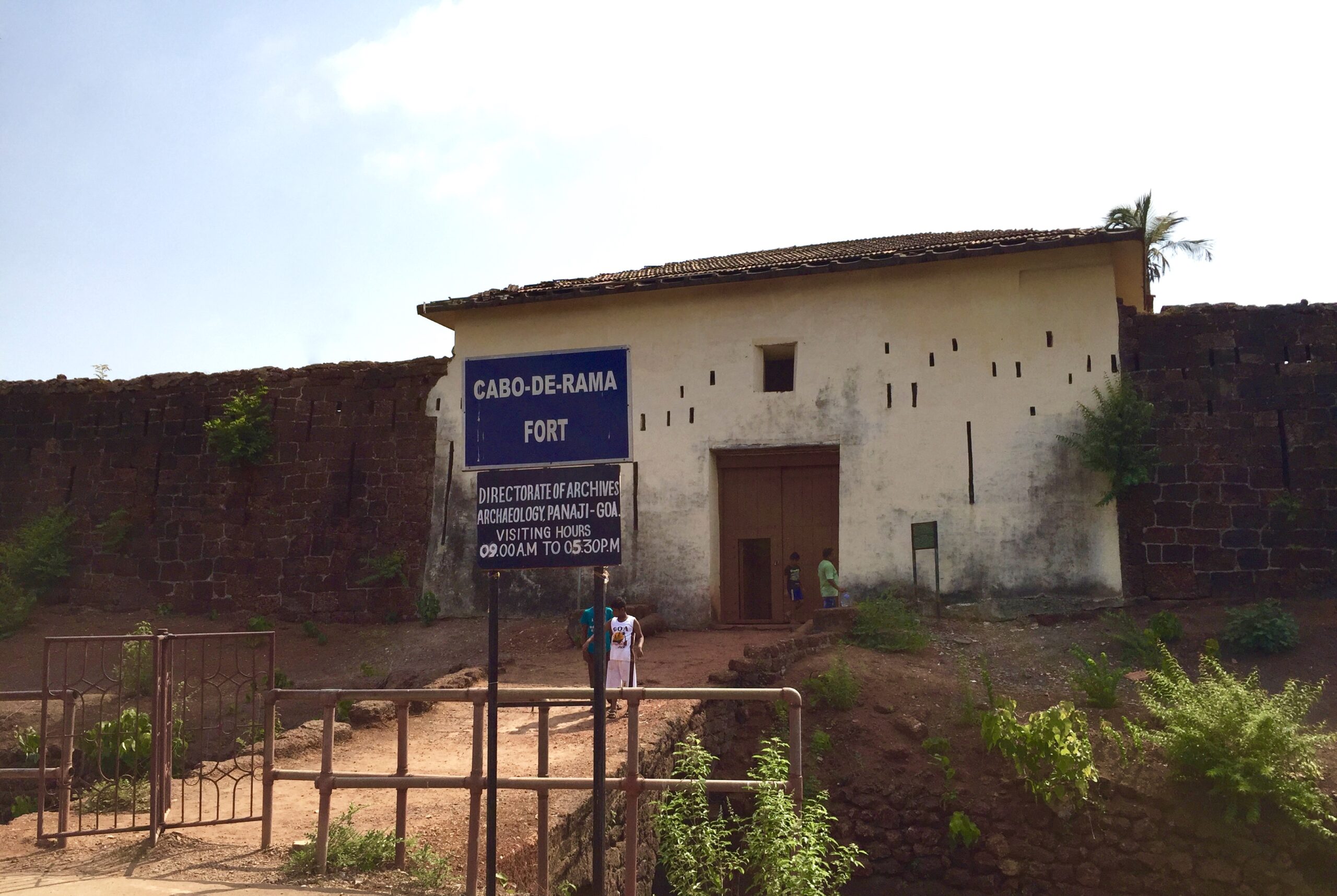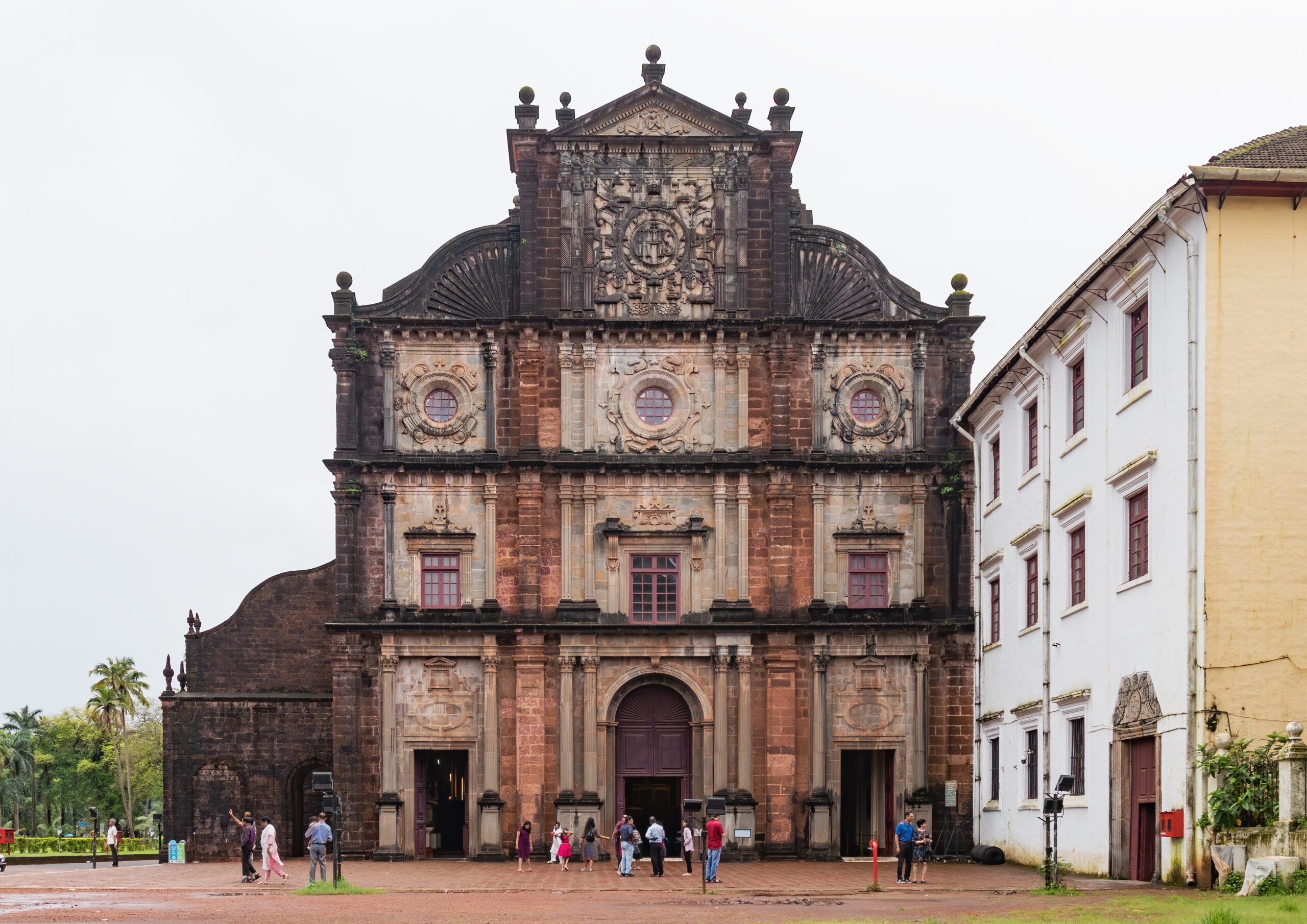
Cabo de Rama Fort, nestled on a dramatic cliff overlooking the Arabian Sea in South Goa, is a historic site steeped in legends and natural beauty. Named after Lord Rama from the Ramayana—who is believed to have stayed here during his exile—the fort blends mythological significance with colonial history.
Originally constructed by Hindu rulers of the Soonda dynasty, the fort was later seized and fortified by the Portuguese in the 18th century. They added cannons, a chapel (St. Anthony’s Church), military barracks, and other defensive structures. Though much of it now lies in ruins, the remnants of watchtowers, dry moats, and bastions still speak of its strategic importance.
The fort offers breathtaking panoramic views of the coastline, lush surroundings, and peaceful beaches like Cabo de Rama Beach and Pebble Beach. Inside, visitors can explore ancient prison cells, freshwater springs, and the still-active whitewashed chapel.
A visit to Cabo de Rama Fort is ideal for history lovers, nature enthusiasts, and sunset seekers, offering a serene escape far from Goa’s crowded tourist hubs.
History of Cabo de Rama Fort
The Cabo de Rama Fort in South Goa carries a layered history blending ancient Indian mythology, medieval Hindu dynasties, and colonial occupation:
1. Mythological Origins
The fort is named after Lord Rama, the hero of the Ramayana.
According to legend, Rama, along with Sita and Lakshmana, sought refuge at this cliffside location during their 14-year exile. This is how the cape got its name — “Cabo de Rama”, meaning Cape of Rama.
2. Hindu Rule (Pre-1763)
Before the Portuguese arrived, the fort was under the control of the Soonda (or Sonda) dynasty, a Hindu kingdom in the Konkan region.
It served as a military and coastal watchpoint to protect against invasions from the south and from seaborne threats.
Its elevated position and natural defenses made it a key stronghold.
3. Portuguese Takeover (1763)
In 1763, the Soonda king surrendered the fort to the Portuguese, seeking protection from the invading Hyder Ali of Mysore.
The Portuguese renamed, repaired, and fortified it. They:
- Added barracks, a commandant’s residence, and 21 mounted cannons.
- Built the Chapel of St. Anthony, which still stands and is in use today.
- Constructed ramparts, a moat, and guard towers to enhance defense.
4. Colonial & Later Use
The Portuguese used the fort both as a military garrison and later, from the 1930s to 1955, as a prison.
After Indian independence and Goa’s eventual liberation from Portuguese rule in 1961, the fort was abandoned for military purposes.
5. Present-Day Legacy
Today, the fort lies largely in ruins, but its walls, gateways, bastions, and cannons still stand as silent witnesses to centuries of political change and cultural blending.
While it is no longer a strategic post, Cabo de Rama remains a cultural and historical landmark visited by those drawn to its legends, architecture, and panoramic sea views.
Significance of Cabo de Rama Fort
Cabo de Rama Fort is more than just a ruined coastal stronghold — it holds deep historical, mythological, architectural, and cultural significance in Goa’s heritage:
1. Mythological Importance
The fort derives its name from Lord Rama, who, as per legend, stayed here with Sita and Lakshmana during their exile.
This link to the Ramayana makes the site sacred and symbolically important for devotees and mythology enthusiasts.
2. Strategic Military Significance
Built originally by the Soonda Hindu rulers, its position on a high cliff offered a strategic view of the Arabian Sea and surrounding lands.
When the Portuguese took over in 1763, they fortified it heavily with 21 cannons, a moat, and barracks, turning it into a major military garrison in South Goa.
3. Colonial Legacy
The presence of the Chapel of St. Anthony, built by the Portuguese and still functional, symbolizes the religious and architectural influence of colonial Goa.
The fort was later used as a Portuguese prison until 1955, showcasing its transformation from a defensive site to a place of confinement.
4. Natural and Scenic Value
Cabo de Rama Fort offers spectacular panoramic views of the Arabian Sea, rugged cliffs, and palm-fringed beaches below.
The natural beauty and untouched surroundings make it a photography and sunset hotspot.
Cultural and Tourist Relevance
Today, the fort stands as a peaceful retreat for visitors seeking offbeat, uncrowded destinations in Goa.
Its combination of history, spirituality, and nature attracts history buffs, photographers, architecture lovers, and solitude seekers alike.
What to Explore inside Cabo de Rama Fort
Cabo de Rama Fort may be partially in ruins today, but it still offers a variety of historical remnants, natural sights, and peaceful corners to discover. Here’s what you can explore inside:
1. Fort Entrance & Walls
- Enter through a massive old stone gateway guarded by the remains of a dry moat.
- The fort walls and bastions still stand tall, offering sweeping views of the Arabian Sea and the surrounding cliffs.
2. Chapel of St. Anthony
- A well-maintained whitewashed Portuguese-era chapel, still active for worship.
- Peaceful and serene, it’s a quiet spot for reflection amidst history.
3. Cannon Bays & Lookout Points
- You’ll find rusted cannons placed at lookout points facing the sea, remnants of the Portuguese coastal defense system.
- These locations offer panoramic views, making them popular photo spots.
4. Ruins of Military Barracks & Prison Cells
- Explore the roofless ruins of Portuguese barracks, quarters, and old jail cells used when the fort became a prison (1930s–1955).
- These rugged remains offer insight into the fort’s past military and colonial life.
5. Water Tanks & Natural Springs
Hidden inside the fort are ancient freshwater tanks and two natural springs, once used by soldiers and residents for water supply.
6. Scenic Walks & Cliffside Paths
- There are unmarked walking trails along the fort’s ramparts and cliffs.
- Enjoy breathtaking views of Cabo de Rama Beach, sea caves, and the rugged coastline.
- A steep path from the fort leads down to Cabo de Rama Beach — a secluded and serene spot.
7. Photography & Nature Spots
The fort is a great location for:
- Sunset views over the sea
- Landscape photography
- Capturing the contrast of stone ruins against tropical greenery
Visiting Information – Cabo de Rama Fort
1. Opening Hours
- Timings: 9:00 AM to 5:30 PM, daily
- Best Time of Day: Late afternoon for scenic sunset views
2. Entry Details
- Entry Fee: Free
- Photography: Allowed (including for personal drones, though permissions may be needed in some cases)
- Parking: Available (often free or with a small fee ₹20–₹30)
3. Facilities
On-site Amenities:
- A small local refreshment stall inside the fort
- No toilets or formal visitor center
- Limited mobile network coverage
4. Best Time to Visit
- Ideal Season: October to March (pleasant weather)
- Avoid: Monsoon season (June–September) due to slippery paths and limited shelter
How to Reach Cabo de Rama Fort
Cabo de Rama Fort is located in Canacona Taluka, South Goa, and is best accessed by road. Here’s a guide on reaching the fort from key locations:
1. By Road (Most Convenient Option)
- From Margao (Madgaon) – approx. 28 km, ~1 hour drive
Route: Margao → Chinchinim → Assolna → Betul → Cabo de Rama
- From Panaji (Panjim) – approx. 60 km, ~2 hours
Route: Panaji → Margao (NH66) → Chinchinim → Cabo de Rama
- From Palolem Beach – approx. 18 km, ~30–40 minutes
- From Agonda Beach – approx. 16 km, ~30 minutes
2. By Rental Bike/Scooter
- Very popular among tourists staying in Agonda, Palolem, or Cola Beach.
- Bikes can be rented for ₹300–₹500/day from local shops.
3. By Taxi or Private Cab
- Taxis are available from major towns or beaches.
- Approximate rates:
₹1,200–₹1,800 for a round trip from Margao
₹800–₹1,200 from Palolem/Agonda
- Pre-book through hotel desks or local taxi stands.
4. By Public Transport (Limited)
- There is no direct bus to the fort.
- Nearest bus stops are in Canacona or Chinchinim.
- From there, you’ll need to hire a rickshaw or local taxi to reach the fort.

